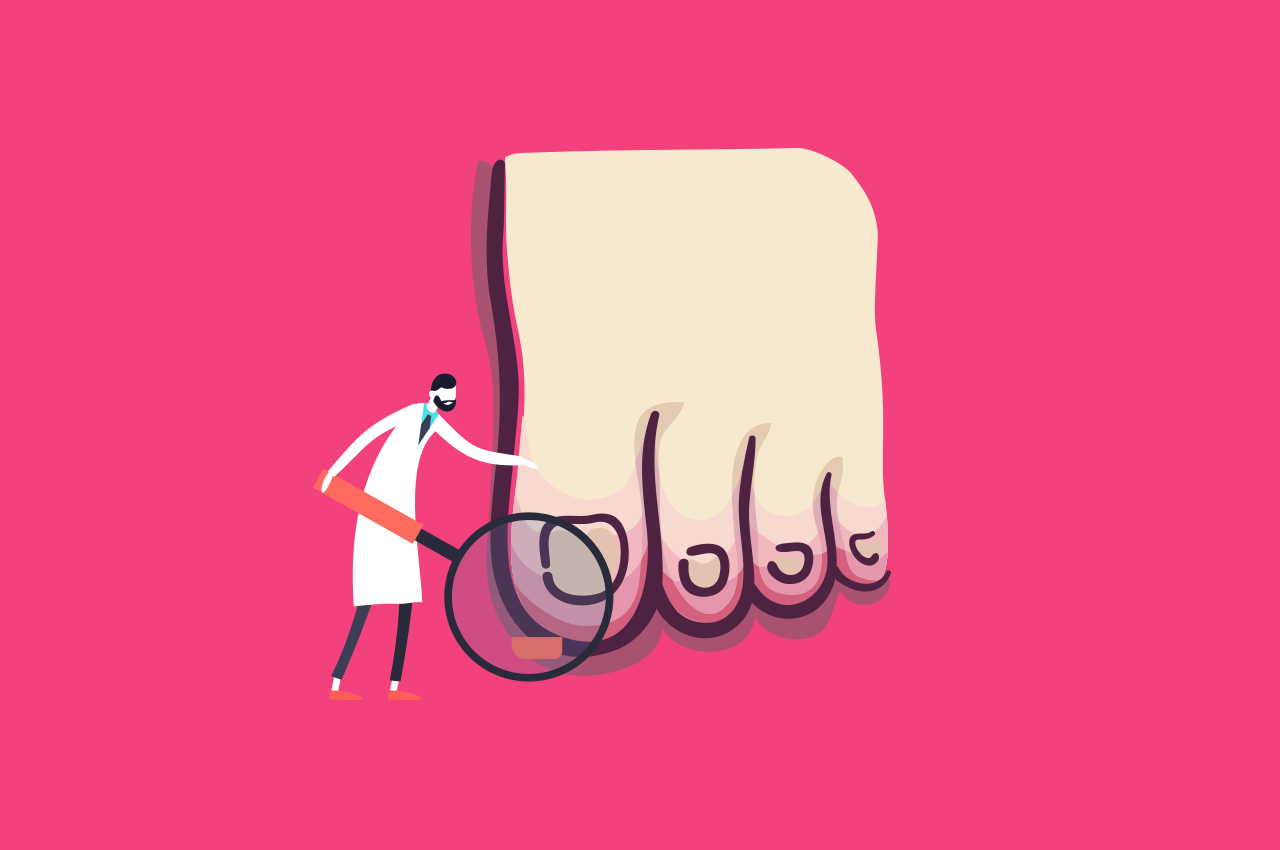An ingrown toenail is a common, painful condition that happens when the side edge of your toenail grows into your skin. As the nail grows in further and further, it digs in and causes pain. The nail breaking through the skin can create inflammation and over time, your toe could become infected.
The big toe is most commonly affected and common signs include pain, redness and swelling. You may have an infected ingrown toenail if there’s a foul odour, it’s hot to the touch, and if there is swelling and oozing.
What causes it?
An ingrown toenail develops from everyday activities. Common ones include improper trimming of the toenail or a shoe that doesn’t fit properly. An injury from nail picking or pedicures could also be to blame.
Athletes often have ingrown toenails as they sweat more than most people. Sweat can make your nails and skin soft. When this happens, the thin nail can eventually split and pierce the softened skin.
Other reasons include poor foot hygiene, repeated pressure on your toes, being overweight and a fungal infection.
Treatment and prevention
- Avoid cutting your toenails too short or unevenly at the corners. Cut them straight across.
- Make sure your socks and shoes fit properly, you should be able to wiggle your toes easily.
- If you’re an athlete or do physical activities often, try going barefoot for an hour or two afterwards.
- If there’s an infection, soak your feet in warm water with Epsom salts or a mild detergent. Later, apply an antibiotic ointment and bandage the infected area.
- If there’s no infection, soak your feet in warm water with Epsom salts. Once the skin is soft and the inflammation has decreased, use a clean nail-cutter and clip the affected area. Apply an antibiotic ointment afterwards.
- If you experience a lot of pain and can’t treat it yourself, see a podiatrist immediately to remove the ingrown toenail.
- Try tucking a small piece of cotton or waxed dental floss under the edge of the ingrown toenail to help with proper nail growth. Soak the cotton or dental floss in medicinal alcohol beforehand. Talk to your doctor before trying this.
Good to know
If your ingrown toenail doesn’t heal after a week or is infected, see your doctor immediately.
A toe protector can help with ingrown toenails. Toe protectors are rings that fit around the affected area or cover the entire toe. It helps cushion your ingrown toenail to lessen or prevent pain. Some kinds come with a medicated gel that helps soften your nails to make trimming them easier.

